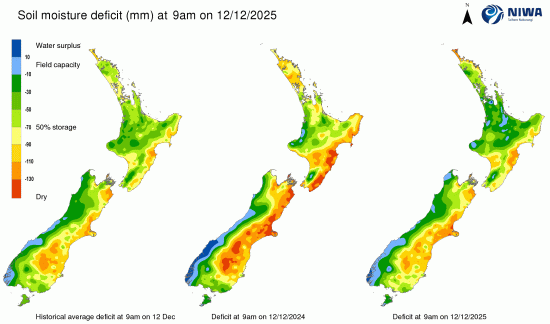
Here's our summary of key economic events overnight that affect New Zealand, with news the world's largest economy is transitioning into a new inflation risk.
First, the overnight personal income and spending data released for the US for August came in pretty much as anticipated. Personal disposable income rose +0.4% in the month and personal consumption expenditure rose +0.6% on the same basis - all from the prior month. But if you think about it, these are actually fast annualised rises with costs rising much faster than incomes.
There same data shows incomes up +1.9% from a year ago, consumption up 2.7% on that year-ago basis. Recent changes are rising faster than these annual shifts. The Fed will have noticed, as PCE inflation is now running well over 3% and its fastest since February. Goods inflation is 4.2% with durable goods up +5.2% in a year. Clearly the tariff-tax effect is not transitory.
But markets ignored the messy detail, preferring to be satisfied with the "as anticipated" aspect and saying 'nothing to see here'.
The updated September University of Michigan consumer sentiment survey was revised slightly lower to be -21% lower than a year ago. Consumers surveyed continue to express frustration over the persistence of high prices, with 44% spontaneously mentioning that high prices are eroding their personal finances. And they say they expect inflation to be +4.7% higher in a years time - interestingly similar to the current goods inflation data.
Markets are going to have to accept that inflation is being structurally embedded at above target levels and that the prospect of more rate cuts is receding if the Fed is to have any credibility with an inflation-fighting mandate. Financial markets have priced in one +25 bps rate cut this year, two by the end of January 2026. Politics may deliver them but it will be at the expense of inflation - which is clearly rising again and quite fast.
In the US, the seriously important harvesting of their soybean crop is underway - but it is missing China as a key customer. China is buying Brazilian and Argentine soybeans and is letting the Americans starve for orders. Although prices are marginally higher, the lack of sales volume for the US crop could quickly turn into a very big problem for them because they just don't have the storage for an unsold crop which could total 16 bln bushels.
The US has also arbitrarily decided to impose new tariffs on pharmaceutical imports, adding to the costs their consumers will have to pay, either via import duties or from new facilities to be built locally. If it goes as Trump plans, the excess capacity internationally (after removing production for the US) will cause international prices to fall as US prices rise. Lose-lose for Americans, win-win for international consumers.
And staying in the US, a full federal government shutdown is looming next week, primarily because the Trump Administration refuses to negotiate a continuing resolution deal with Congress. Unlike similar prior deadlines, this one has one party who "doesn't care".
Across the Pacific, China is about to go on its 2025 national Golden Week holiday which will run from Wednesday, October 1st to Wednesday, October 8th, an extended eight-day holiday that combines National Day with the Mid-Autumn Festival. This is a major time for domestic and international travel, resulting in busy transportation and tourist activity. Businesses largely suspend their operations in this time but key government departments operate.
Overnight, Singapore released industrial production data delivering a large negative surprise. This activity was down a massive -7.8% in August from a year ago. The monthly data was sharply negative too. It was largely driven by very big drops in the electronics and biomedical sectors and caught the very much by surprise.
This week our look at one core global resource focuses on bauxite, the mineral used to refine aluminium. To do so requires massive amounts of electricity - in fact aluminium is sometimes referred to as "solid electricity". At current production levels at existing mines, these are expected to last at least 60 years. But that doesn't account for known resources that are yet to be mined. Not only does the latest reviews not include large recent African discoveries the Chinese are developing, they also don't include grades that are currently avoided because easier access is currently available. This resource will last many centuries at current production levels. But the main limitation will be the availability of electricity at prices that justify its production.
The UST 10yr yield is now at 4.18%, little-changed from yesterday to be up +5 bps from a week ago. The key 2-10 yield curve is now at +54 bps. Their 1-5 curve is no longer inverted, now positive by +10 bps. And their 3 mth-10yr curve is now +5 bps positive. The China 10 year bond rate is down -1 bp at 1.88%, up +1 bp for the week. The Australian 10 year bond yield starts today at 4.38%, up +2 bps overnight, up +12 bps from a week ago. The NZ Government 10 year bond rate starts today at just under 4.26%, down -1 bp from Friday and up +3 bps from a week ago.
Wall Street was marginally firmer in Friday trade with the S&P500 up +0.6% but is down -0.2% for the week and now off its record high reached on Monday. Overnight, European markets were all stronger, up about +0.9%. But yesterday, Tokyo closed down -0.9% on Friday to be down -0.6% for the week. Hong Kong closed down -1.4% for a -1.3% weekly drop, and Shanghai closed down -0.7% on Friday for a +0.2% weekly gain. Singapore ended its session down -0.2%. The ASX200 ended its Friday up +0.2% for a net -0.1% fall for the week. And the NZX ended down -0.3% on Friday for a -0.9% retreat for its week.
The Fear & Greed index is now back in the 'neutral' zone from 'greed' last week.
The price of gold will start today at US$3772/oz, up +US$34 from yesterday. That is up +US$91 from a week ago. Silver had another big spurt overnight, now up over US$46/oz, a weekly gain of +US$3.
American oil prices are up +50 USc at just on US$65.50/bbl, up +US$3 from a week ago, with the international Brent price now just under US$70/bbl.
The Kiwi dollar is at just under 57.8 USc and up +20 bps from yesterday, but down -80 bps from a week ago. Against the Aussie we are unchanged at 88.2 AUc but down -60 bps for the week. Against the euro we are down -10 bps at 49.3 euro cents and also -60 bps lower for the week. That all means our TWI-5 starts today at just over 65.2, similar to yesterday but down -60 bps for the week.
The bitcoin price starts today at US$109,574 and up +0.6% from yesterday but down -5.7% from this time a week ago. Volatility over the past 24 hours has been low at just on +/- 0.7%.
Daily exchange rates
Select chart tabs
The easiest place to stay up with event risk is by following our Economic Calendar here ».
5 Comments
'But the main limitation will be the availability of electricity at prices that justify its production.'
Yes, sort of, but its more than that.
The availability of low-entropy energy, to apply not to just smelting but to extraction too - and 'cheap' eventually means low entropy. We are moving away from low entropy options (a Manapouri near a Bluff across from a Weipa). So it's really at - and below - a certain EROEI that we'll drop 'production'. About the same time belief in our ability to repay debt implodes, probably (because 'prices' mean nothing if you can't repay debt).
Good to see the comment: 'at present consumption levels'; if we try to replace everything FF-based (which is the GND approach, give or take) then 'present' would go out the window. And present isn't static anyway: exponential outpaces finite-remaining, very quickly indeed.
And the planet will track the US graph here:
Aluminum industry in the United States - Wikipedia
Running out is never the issue (but is the approach common to linear thinkers). Peaking is the problem - as that graph points out. And peak happens about the time you enter the last 'doubling-time'.
The price of gold will start today at US$3772/oz, up +US$34 from yesterday. That is up +US$91 from a week ago. Silver had another big spurt overnight, now up over US$46/oz, a weekly gain of +US$3.
Gold will be a bigger % of global FX reserves than USTs in a few months. If you don't believe that's possible, take a look at the FT article linked here.
Central bank gold ($4.3T) will likely soon be > total USD assets in FX reserves ($6.7T).
Consensus only now shifting from "denial" to "anger" stage of grief. Then bargaining, depression, acceptance.
https://www.ft.com/content/0dbc435d-7d7e-43d7-b730-b8ced4b1cba2
Any chance David you are emotionally overblowing the risks from 10,000 odd kms away rather than 350mio Americans not so bothered about their daily lives?
And staying in the US, a full federal government shutdown is looming next week, primarily because the Trump Administration refuses to negotiate a continuing resolution deal with Congress.
So I understand a continuing resolution (CR) to be a temporary roll-over of an existing (prior) budget. But then they had the passage of the "One Big Beautiful Bill" by both houses. Wasn't that the 'new' budget?
I don't get why they are going for another CR. Anyone else understand that?



We welcome your comments below. If you are not already registered, please register to comment
Remember we welcome robust, respectful and insightful debate. We don't welcome abusive or defamatory comments and will de-register those repeatedly making such comments. Our current comment policy is here.